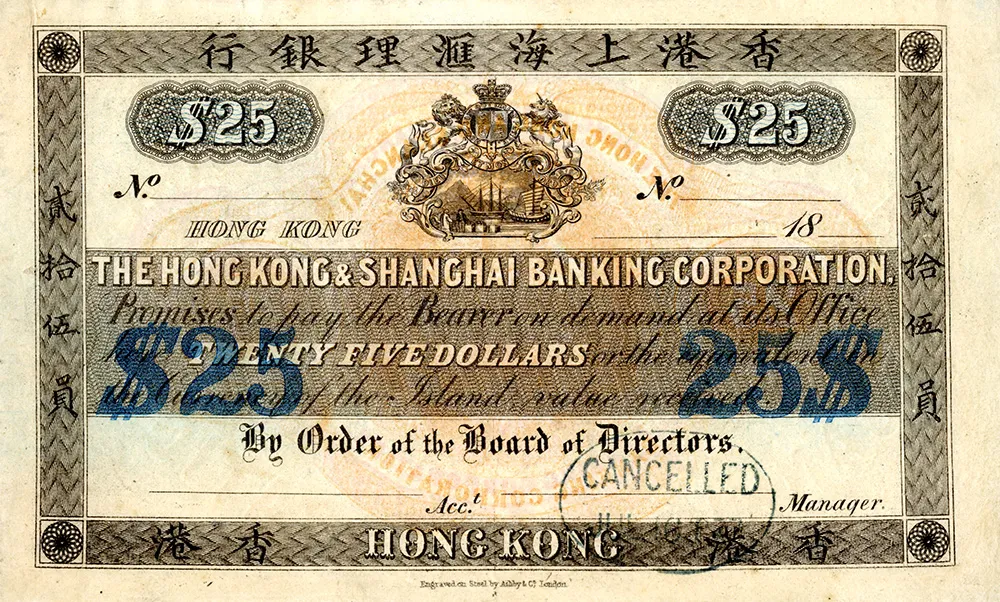Stepping Out from Zheng He’s Shadow: World History, Ming China, and Greater East Asia in the Fifteenth Century

Table of Contents
Most authors of world history textbooks and world history teachers seem to love the voyages of Zheng He. The treasure ships dwarfed all contemporary ships, the two main individuals (the Yongle Emperor and Admiral Zheng He) were larger than life characters, and there were African giraffes being mistaken for mythical . These pieces make for good stories. The end of the voyages in 1433 also naturally leads world history teachers to ask students to think about why the Chinese government willingly chose to end the voyages and how world history might have been different if the voyages hadn’t ended. The end of these voyages change how we talk about the “discoveries” of Columbus and da Gama when the voyages of Zheng He become a fun version of what if in our history classes.
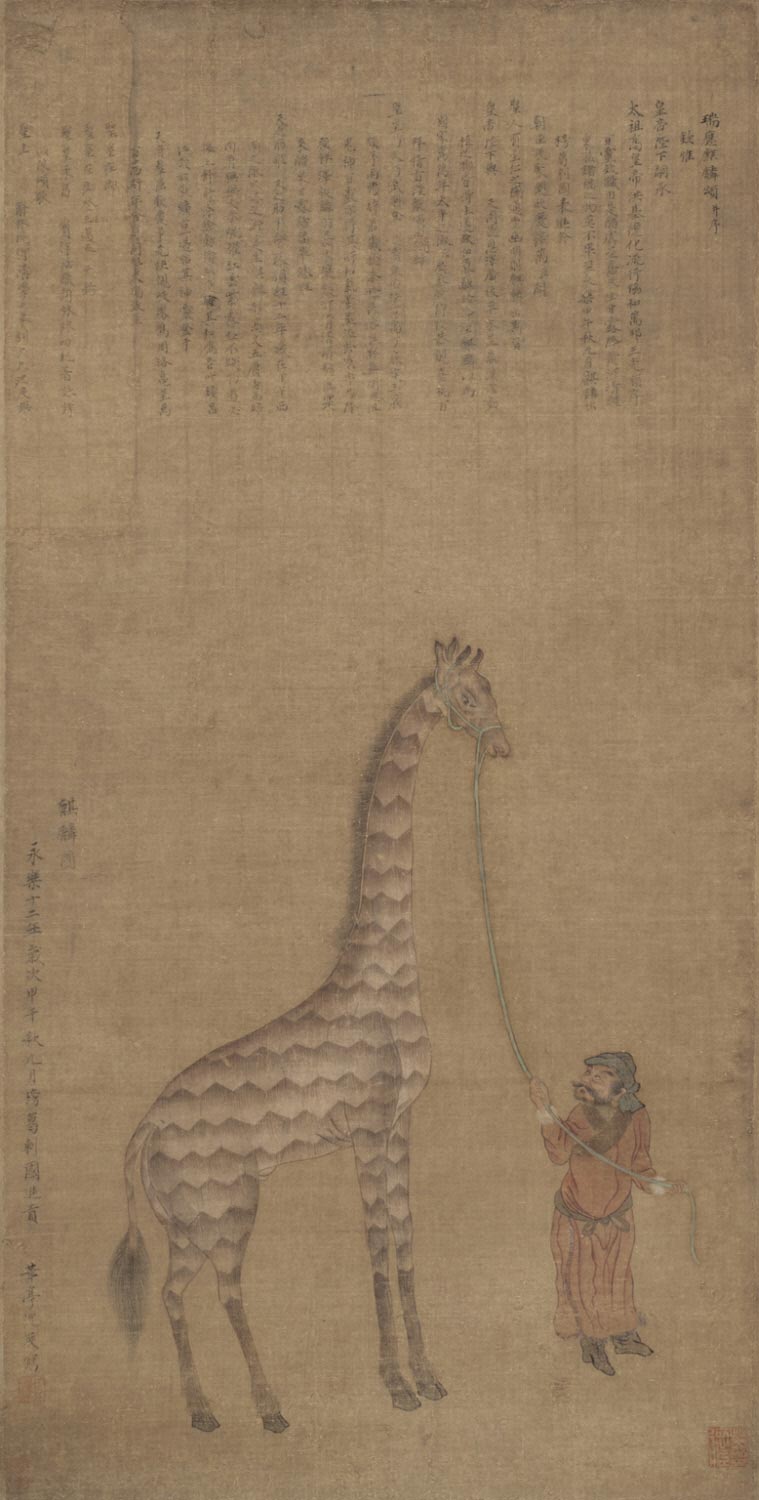
Given this tendency to teach about these voyages with one eye looking to Columbus and da Gama, it raises the possibility that we as teachers are potentially making too big of a deal of these voyages. Even if we keep in mind the popularity of these voyages in the context of world history classes, it is worth asking if the obsession with the voyages actually helps our students make sense of world history and East Asia in the fifteenth century. It seems that the focus on China’s relatively brief projection of maritime influence across the Indian Ocean actually distorts our understanding of early Ming China and East Asia as a whole. It’s not that the voyages don’t matter, but that we should also consider briefly how the early Ming Dynasty envisioned its foreign policy on its own terms and how it interacted with its main neighbors (the Japanese, the Koreans, the Mongols, the Vietnamese, and other Southeast Asian peoples). And with that broader Chinese perspective we can better understand not only why the Ming Dynasty chose to end the voyages, but also how the Ming Dynasty evolved, how it stayed the same, and how it projected power and influence across East Asia.
The Hongwu Emperor and the Foundation of the Ming Dynasty’s Foreign Policy
When Zhu Yuanzhang emerged from the chaos of the late Yuan Dynasty in 1368 as the Hongwu Emperor and the founder of the Ming Dynasty, he had a specific vision for how the Chinese state should work and how it should relate to its neighbors. Hongwu consciously wanted to restore the vision and practices of earlier Chinese dynasties, such as the Song and Tang. He emphasized what he saw as traditional Chinese values, such as Confucian teachings. He also restored the imperial examination system and even encouraged “civilized” clothing, by which he meant traditional Han Chinese clothing. While he saw himself as breaking with the Mongol Yuan Dynasty, he also retained certain Mongol practices, such as community schools and military institutions. There were even a significant number of Mongol notables at the imperial court and Mongol soldiers in the Ming military. In thinking about Hongwu’s overall vision for Ming China, it’s worth emphasizing that while there was an ideal vision, Hongwu was perfectly willing to adopt policies and institutions that contradicted that vision. Hongwu wanted a Han Chinese state, but he also was willing to adopt “foreign” customs when it made sense.
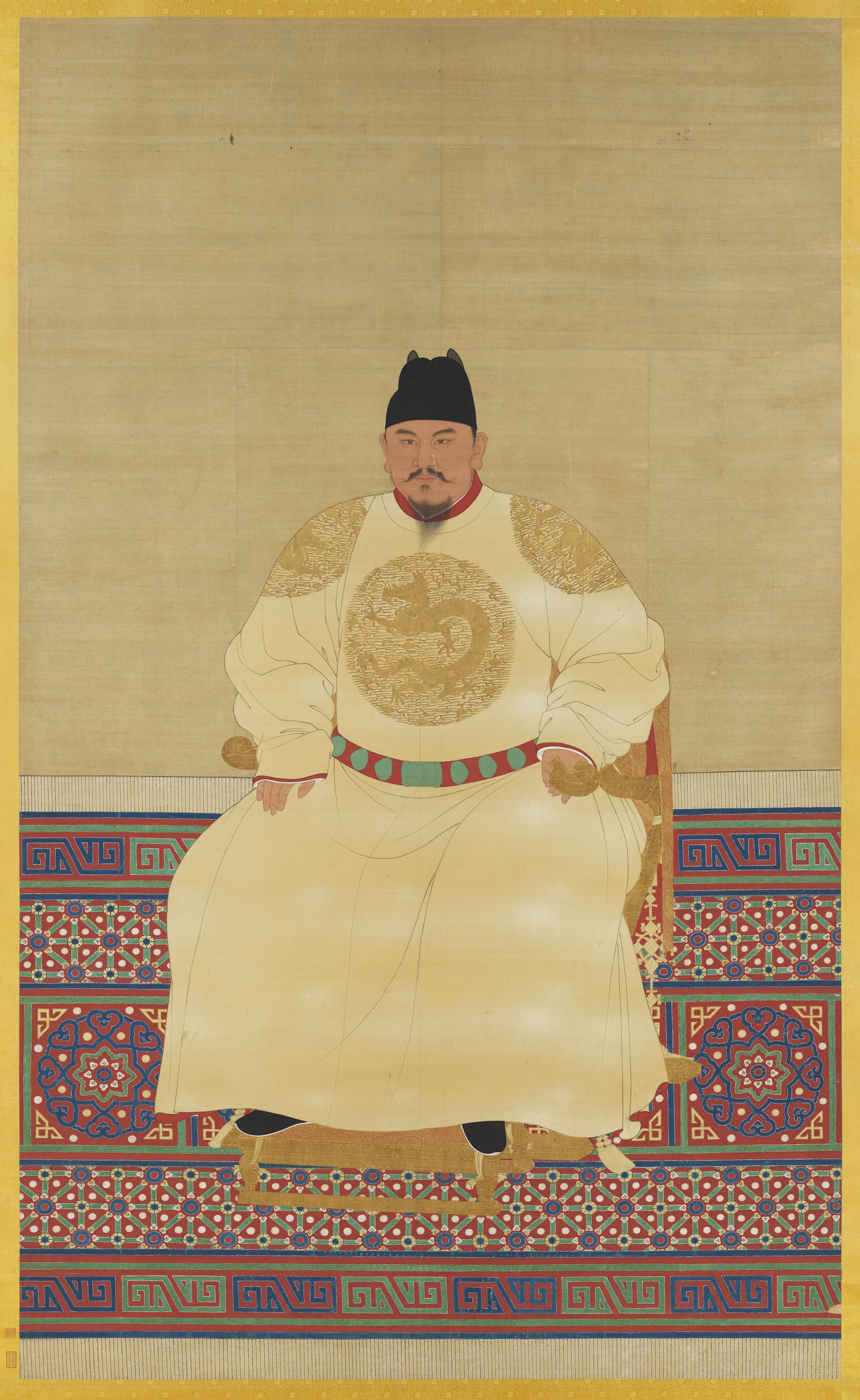
In terms of foreign policy, Hongwu promoted a clear world view which saw China as the “Central Country” (Zhongguo, sometimes translated as “Middle Kingdom”) because of its civilized culture and the peoples around them being characterized by varying degrees of civility and barbarity. The term guo, which is part of the name Zhongguo, implies a degree of civility, and it was also used to describe some of China’s neighbors. This name Zhongguo and the use of guo only for those neighboring peoples who also based their states on Confucian principles reflected the Chinese government’s belief in the inherent superiority of Chinese Confucian values. The terms used for other peoples reflected China’s belief in their barbarity.
Despite this belief in China’s inherent superiority and most other people’s barbarity, Hongwu still interacted with and even wanted to be recognized by the rulers of neighboring states. One of the first things Hongwu did as emperor was “to notify the rulers of all other known socio-political entities that were geographically within reach that the Ming dynasty now controlled China, that it would expect periodic tribute embassies from foreign states, and would in return grant legitimacy and also a measure of protection to foreign rulers and their families, recognizing formally each orderly succession as it occurred.” Hongwu was not interested in establishing full-time resident embassies in neighboring states, but he did believe in regularly sending envoys and receiving tribute missions. The emperor emphasized the need for these reciprocal relationships between China and its neighbors in his Ancestral Injunctions, a work intended to lay out a clear series of principles about how Chinese rule, including foreign policy, should function. He even specified certain states in East and Southeast Asia that the Chinese should protect and never invade. For example, Korea, Japan, Vietnam (both Annam in the north and Champa in the south), Java were on the special list, but Mongolia was not. Countries that participated in the tribute system were also given official permission to regular trade with China through legitimate channels. It was also during Hongwu’s reign that the Ming Dynasty fully integrated the region that is now known as the Yunnan province into the Chinese. The region had first been integrated into China during the Mongol Yuan Dynasty, but during the Ming Dynasty, especially in the late fourteenth and fifteenth centuries, millions of Chinese migrated into Yunnan and the province became an integral part of the Chinese state.
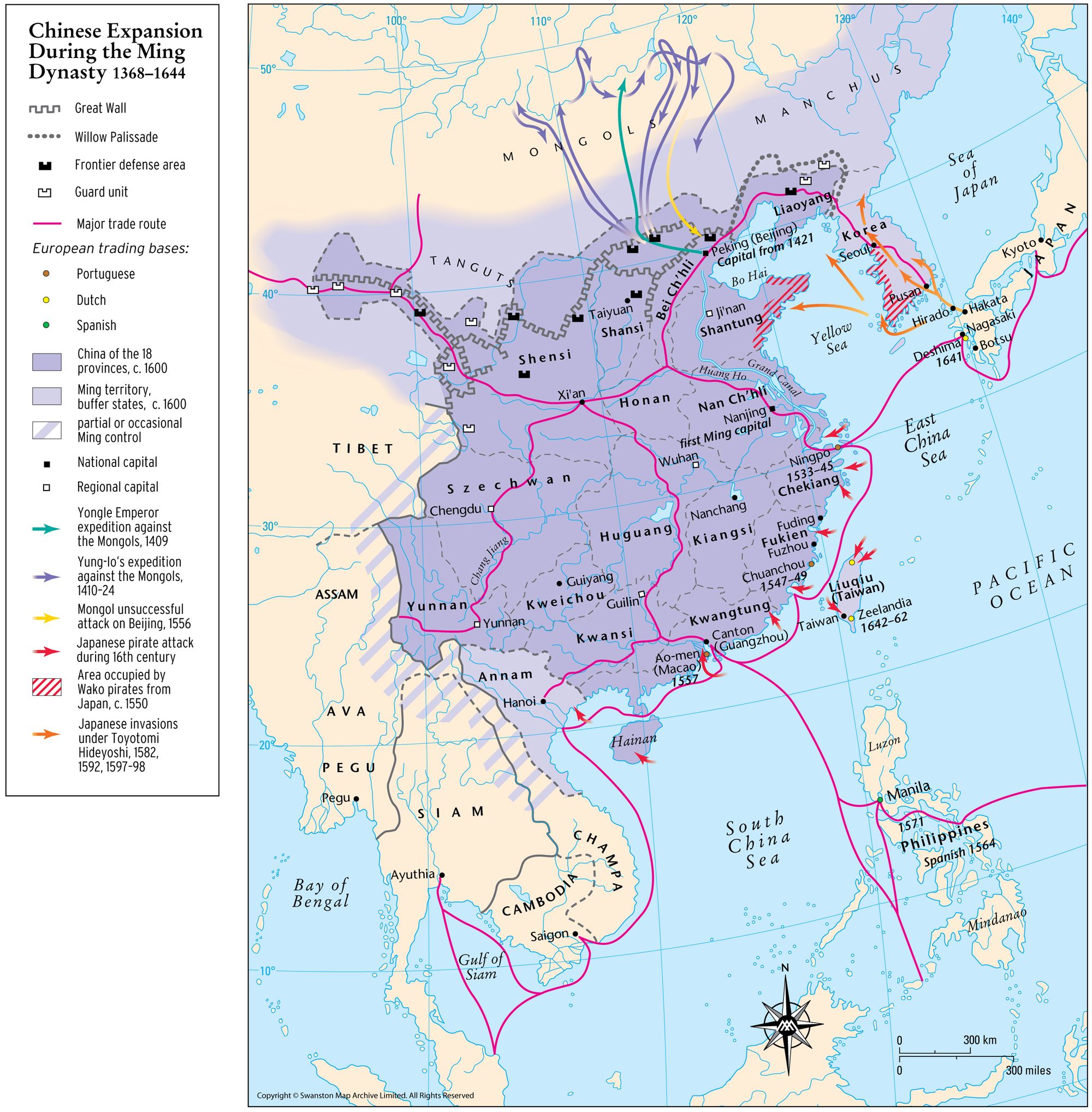
In short, the foreign policy articulated by Hongwu envisioned China as superior to all other states, but it also established a clear way in which China regularly interacted with other states, and even specified which states were most important to maintain good relations with. There was a clear desire to remain the preeminent power in the region of Greater East Asia and less concern with projecting power far beyond the region.
The Yongle Emperor and the Ming Voyages
When Zhu Dhi, one of the younger sons of Hongwu, became the Yongle Emperor in 1402, he had displaced his nephew, the rightful emperor according to the principles of Hongwu. Yongle quickly set about projecting an image of himself as a powerful emperor. He engaged in a number of domestic projects. He transformed the city of Beijing and made it the capital. He rebuilt the Grand Canal to make sure the new capital was properly provisioned. He reorganized the Ming military and the civil bureaucracy.
As I have already discussed, the most well-known project of Yongle’s reign was the voyages to the “South” and “Western” Seas (the Chinese names for the greater Indian Ocean) led by Zheng He. These seven voyages are best understood as an extension of the Chinese tribute system that his father had emphasized. On each voyage, the Chinese fleet would return with foreign rulers or their representatives who recognized the Emperor and offered tribute (that’s why we know about the giraffes!). None of these voyages involved merchants, nor were they financially supported by them. So while there often were new trade relations that came about because of the voyages, those new relations were more accidental and not the intended function of the voyages.
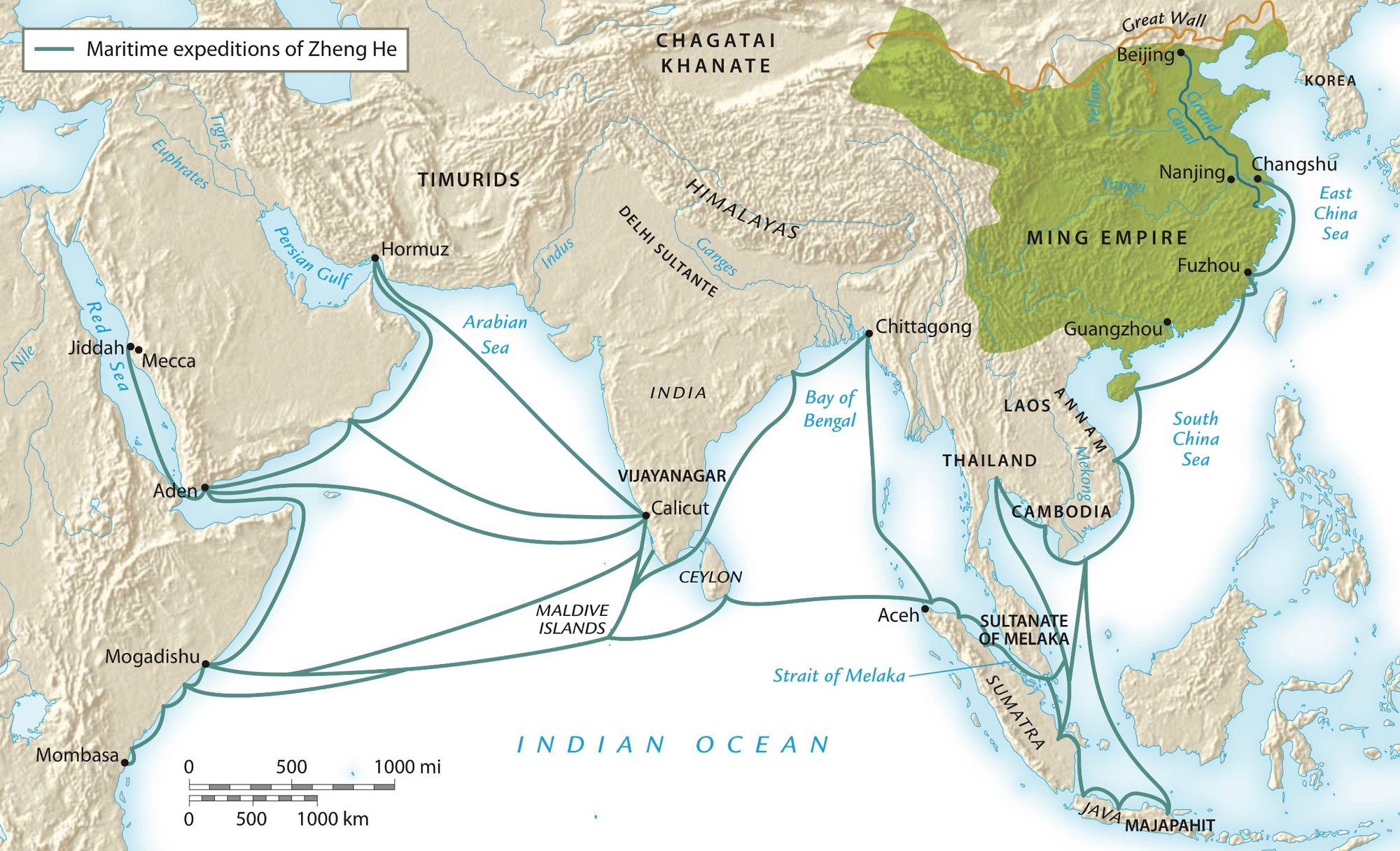
When the Emperor Xuande, Yongle’s grandson, finally ended the voyages after Zheng He returned for the seventh time in 1433, he did so because the original goals of the voyages had been achieved and the cost of the voyages was too great in terms of financial outlays and resource use. The argument that is sometimes put forth that China had no interest in the world beyond its borders doesn’t make sense given the original foreign policy vision of Hongwu and the continued practice of tribute relations with China’s closest neighbors.
Ming Foreign Relations Beyond Zheng He
It’s easy to understand how Zheng He’s voyages have become the example of Ming foreign policy that world history textbooks focus on. They occurred on such a grand scale that it would be impossible to ignore them. At the same time, the grandness of these voyages almost sometimes leads us to forget the foreign policy principles laid down by the Ming Dynasty founder Hongwu. The original vision of Hongwu imagined a stable Chinese state whose neighbors recognized the legitimacy of the Emperor and participated in diplomatic and commercial exchanges based on the principles of the tribute system.
When Yongle came to power in 1402, he followed his father’s foreign policy in many ways. He sent out envoys to neighboring states inviting them to recognize his rule and engage in tributary relations with China. Yongle even expanded the number and reach of these envoys. In 1402, he recognized the Choson Dynasty in Korea, which had come to power in 1392. He also sent multiple envoys during the 1410s to Herat and Samarkand in Central, where they met with the Timurid courts. These rulers even sent envoys back to China. Yongle also sent envoys to Japan in 1404, where the Ashikaga shogun Yoshimitsu agreed to participate in the Chinese tributary system. To facilitate these diplomatic exchanges, Yongle even set up the Siyiguan, the Board of Translators in 1407. Eight different languages were taught there, so that Chinese officials both within China and abroad could communicate with foreigners in their native tongue. Like his father, Yongle also used the Ming military to ensure stability in northern China against the threat of the Mongols. Yongle himself even led the military into battle five times.
One major deviation from his father’s vision was Yongle’s decision to invade Annan in 1406. Even though his father had warned against becoming militarily involved with China’s closest neighbors, the Tran Dynasty of Dai Viet/Annam (the northern part of modern-day Vietnam) had been one of the states that had sent tribute to Hongwu. China was technically obliged to protect the Tran Dynasty that had recognized the legitimacy of the Ming Emperor. In 1400, a usurper overthrew the Tran Dynasty. When a descendant of the last Tran Emperor went to the Ming court, he contributed to Yongle deciding to invade Annam in 1406. By 1407, the Chinese army had conquered the region and integrated it as a province of China. It was known as Jiaozhi province, which had been the name of the region when it was a province of China during the Han and Tang Dynasties.
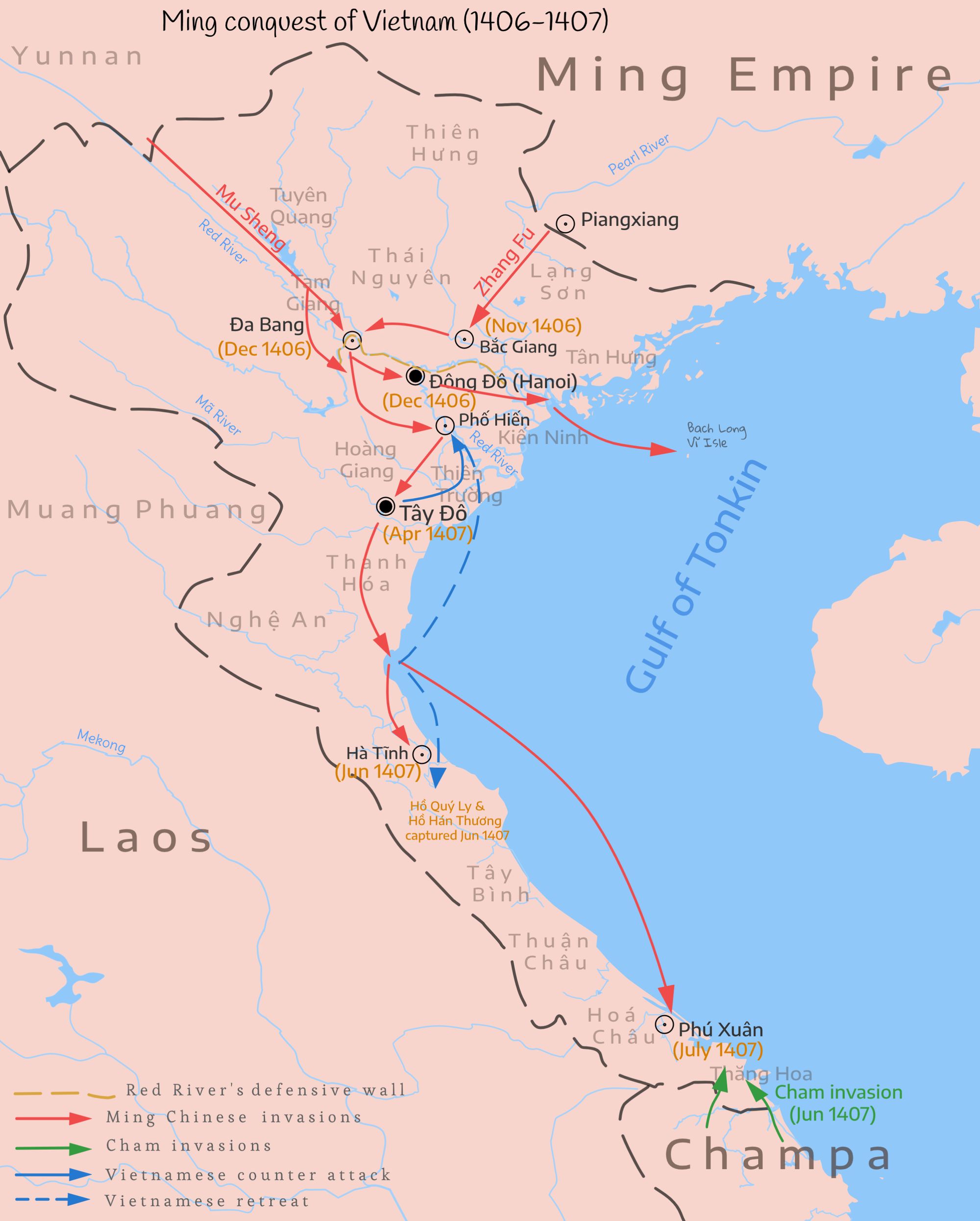
After Yongle’s death in 1424 and the end of the voyages in 1433, Ming foreign policy largely continued to follow the established patterns laid down by Hongwu. Throughout the fifteenth century, Korea regularly sent three tributary missions per year to the Ming court. The new tributary relationship with Japan persisted throughout the century and envoys were regularly exchanged between China and Japan until 1549. This Sino-Japanese cooperation was also connected to a shared desire to prevent the unregulated trade associated with the Wakou, who are sometimes referred to as Japanese pirates, but who could also be understood as unlicensed private traders who acted outside the rules of trade established by the Chinese state. Even after the Chinese military withdrew from Vietnam in 1427, the new Le Dynasty quickly engaged in tributary relations with the Ming Dynasty for the rest of the fifteenth century. The case of Vietnam was not unique in Southeast Asia. Geoff Wade, a specialist in Sino-Southeast historical interactions argues that “there was frequent exchange of envoys between Ming China and the polities of Southeast Asia” throughout the fifteenth century.7These regular exchanges even contributed to what he calls “the first major wave of Sinicization of Southeast Asia.”
The Ming Emperors also continued to emphasize using their military to maintain China’s territorial integrity and even somewhat expand its border. The main concern was defending the northern border against Mongol incursions. Ming emperors regularly used the military against the Mongols. Even when the Zhengtong Emperor (r.1435-1449) was taken captive by the Mongols, his brother, who briefly became the Emperor Jingtai, was able to make sure that the Mongols were unable to capitalize on his capture. The Zhengtong Emperor was eventually released, while the Mongols gained no territory in China. The Ming military was also regularly deployed in Yunnan, where, as was mentioned earlier, the Ming brought the new province more fully into the Chinese state and where millions of Han Chinese migrated.
It quickly becomes clear the end of the voyages of Zheng He did not lead to China shutting itself off from the outside world. If anything, Chinese emperors regularly engaged with neighboring states throughout the fifteenth century both diplomatically and militarily.
Conclusion
In thinking about how we make sense of the voyages of Zheng He and Ming foreign policy, I can’t help but draw a parallel to the recent withdrawal of the United States from Afghanistan. I’m not interested in debating if the withdrawal was the correct decision or trying to make sense of all the problems caused by the American invasion, occupation, and withdrawal. I think most Americans would agree that while the American involvement in Afghanistan for twenty years is important, it’s also not the only example we should use to make sense of American foreign policy in the twenty-first century. It’s one example of foreign engagement, and we need to look at other examples to gain a more comprehensive and nuanced understanding of American foreign policy. In the same way, we need to understand the voyages of Zheng He not as an isolated phenomenon, but as simply one part of broader Ming foreign policy over the course of the fifteenth century and with roots in the vision first established by Hongwu.
If seen from a Eurocentric perspective in which the voyages of Columbus and da Gama shape our understanding of East Asian and world history, the voyages of Zheng He seem to represent a rapid engagement with the wider world which proved short-lived. But if we want to break out the Eurocentric paradigms that subtly influence much of world history, we should start to make sense of the voyages from the perspective of the Chinese and East Asian diplomatic patterns. Keeping that in mind, the voyages were primarily focused on extending the tribute system (and not seeing them as being focused on fostering new trade connections), and they were less of a fundamental change from the past. Tributary relations and diplomatic exchanges were an integral part of the Chinese foreign policy laid down by Hongwu. The voyages of Zheng He briefly extended that tribute system much further than had previously been attempted.
Given that the end of the voyages did not mark an end of China’s tributary relations with its neighbors in East and Southeast Asia, we can also begin to see some clear continuities across the first 150 years of the Ming Dynasty. Regular engagement with neighboring states based on the East Asian tributary model was a fundamental part of the early Ming Dynasty until at least 1500. Changes tend to be more exciting in world history courses, but we also want to make sure we emphasize continuity and not simply dismiss it as the road not taken.
Acknowledgments
This essay was inspired by a workshop in the Spring of 2021 organized by the Office of Resources for International and Area Studies (ORIAS) at the University of California, Berkeley focused on the tribute system in East Asia. I want to thank Shane Carter for organizing the workshop, and the other participants (Eric Beckman, Eunjee Kang, Stephanie Keith, and Sixiang Wang) for presenting information and pushing me to rethink how I teach about East Asia. Our discussions during the Spring were not only intellectually engaging, but they were a great way to cooperate with colleagues across the country during the pandemic. Eric also provided some helpful feedback on this essay.
Bibliography
Anderson, James A. “The Ming Invasion of Vietnam, 1407–1427,” in East Asia in the World: Twelve Events That Shaped the Modern International Order, eds., Stephan Haggard and David C. Kang. Cambridge: Cambridge University Press, 2020, 97-107.
Dardess, John W. Ming China, 1368–1644: A Concise History of a Resilient Empire. Lanham: Rowman & Littlefield Publishers, 2012.
Kang, David C. East Asia Before the West: Five Centuries of Trade and Tribute. New York: Columbia University Press, 2010.
Kuhn, Felix. “Much More Than Tribute: The Foreign Policy Instruments of the Ming Empire,” Journal of Chinese History (2021), 5, 59–82.
Levathes, Louise. When China Ruled the Seas: The Treasure Fleet of the Dragon Throne, 1405-1433. Oxford: Oxford University Press, 1997.
Robinson, David M. Ming China and Its Allies: Imperial Rule in Eurasia. Cambridge: Cambridge University Press, 2020.
Wade, Geoff. “Ming China and Southeast Asia in the Fifteenth Century,” in China and Southeast Asia: Historical Interactions, eds., Geoff Wade James K. Chin. New York: Routledge, 2019, 87-129.
Liberating Narratives Newsletter
Join the newsletter to receive the latest updates in your inbox.


